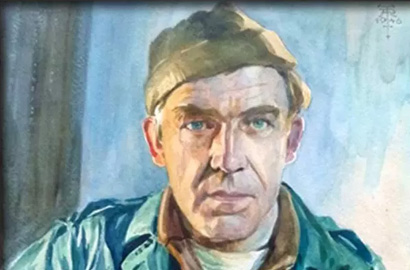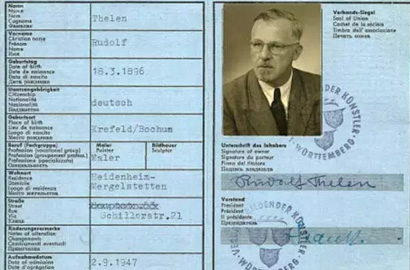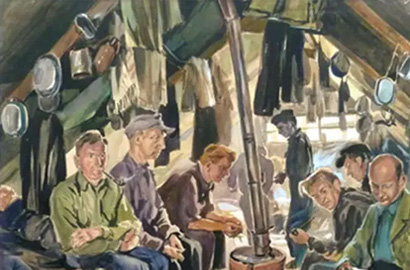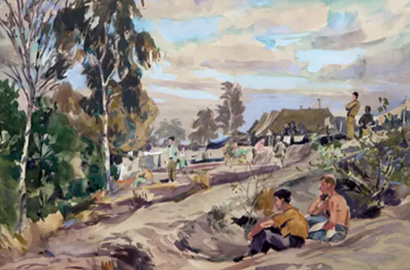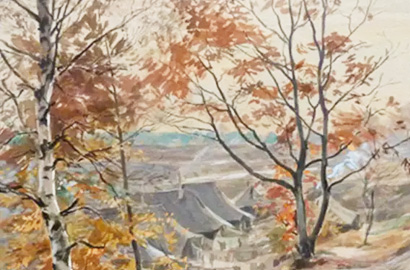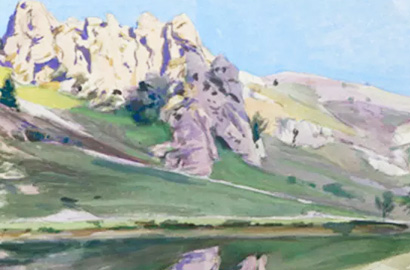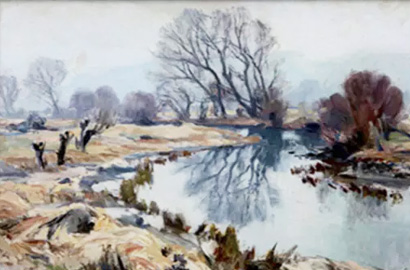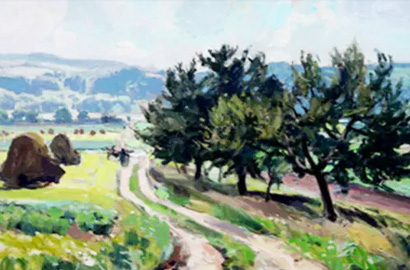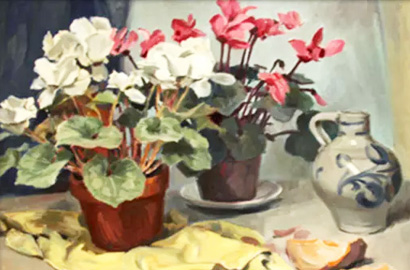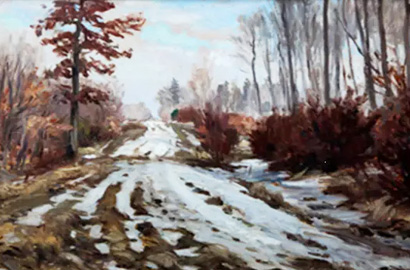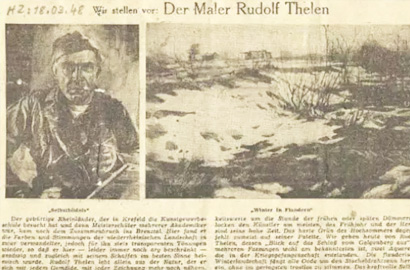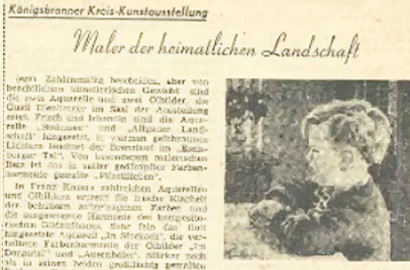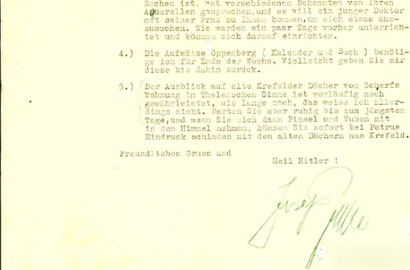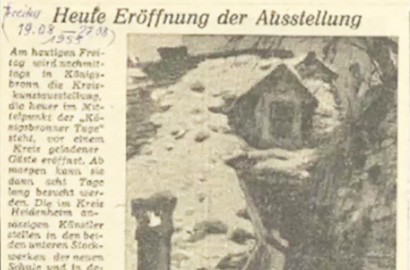
Profile
Rudolf Trent (Rudolf Thelen) 1896 – 1958
Rudolf Trent was born on March 18, 1896 in a farmer's family in Cray Fuerth Bohm. He had an extraordinary artistic ability when he was very young. At the age of 10, he began to draw, and later entered the University of the Arts in Germany. Before the First World War, Rudolf Trent learned painting from professor Lamont Doherty in the Traditional Art Institute of in Clay Filter city. After the war, he continued his studies at the Kunstakademie Dusseldorf with Professor Hans, accepted a strict training in painting, thus having got a solid modeling ability. Soon after, he became a member of the lower left Artists Association of Rhine. He insisted on oil painting creation and color research for a long time, and grew up with great talent rapidly. His paintings are full of passion, sincerity and simplicity. Before the Second World War, he had held arts exhibition in Holland, B Belgium, Spain, Luxemburg, France, Switzerland, Germany and other major cities.
During the Second World War, Rudolf Trent was arrested by the U. S. Army and imprisoned in the French prison, but he never stopped painting. Because his drawings has a great significance at that time, his paintings especially the portraits reached the first-class level at that time in Europe with great reputation, the American Army appreciated his works very much and regularly provided him with the materials used in the painting. He painted portraits of many American officers and created a number of excellent works in prison. At that time there was a prison doctor who was also an art enthusiast and admired Rudolf Trent's artistic talent. In order to go out for Sketch creation with Rudolf Trent, he secretly gave him false sick leave.
Because Rudolf Trent has a talent and great reputation in portrait painting, Hitler has repeatedly asked him to paint portraits but was refused by him every time. Hitler's secretary wrote a letter to him with a strong tone. The letter wrote: "if you refuse our invitation, you will die with ink and pen.” (this letter has retained the original character). He had no favor of Hitler's personality and was not afraid of any risk. With the risk of decapitation, he still refused Hitler’s request. How much courage and strength he had at that time! Since then Rudolf Trent was not allowed to exhibit his works at any museum in Germany.
After evacuation in 1944, he and his family returned to Heidenheim as part of post-war Returning personnel and stayed in this city. He admired and loved this city. For the rest of his life, he continued to work as a dedicated, honest and gentle "home painter." Whether it is the sketch, watercolor or paintings, Rudolf Trent could give full expression of delicacy of lines and beauty of form. His landscape painting had profound understanding of nature. His view of art, direct observation and description of the nature made him integrate the morphology, space and motion sensitive feeling with the painting. His landscapes with trees, roads and rivers as the main body of the artistic image often depicted similar scenery with repetition. He painted with the accurate modeling language, and produced a realistic picture so as to express his heroic momentum.
Because Rudolf Tren had a great outstanding performance in painting, after the Second World War, the Baden Wurttemberg government awarded him the "free display certificate". The exhibition was Available anywhere in Germany, free of charge and at any time. Rudolf Trent’s works were published for many times in the German newspapers. So far the Berlin Museum of fine arts has collection of his works.
Rudolf Hayden Trent passed away on June 4, 1958 in Anaheim. Thereafter, his posthumous work was very hard to find and the artistic value soared. Especially in Baden, many large companies such as SIEMENS, Forit, BMW, Benz Corp had purchased and collected his works. He has been worshipped by art circle and many young artists. This great artist has not only extraordinary creativity in art, but also a broad mind and great courage, who has been praised and missed by people until now. In the recording of history documents, Rudolf Hayden was excellent in both virtue and arts, he was the most creative and influential artist at that time in Germany. He and his paintings occupy an enduring place in the history of German art. He left a glorious page in the history of European painting. (all original copies are kept)

 Profile
Profile